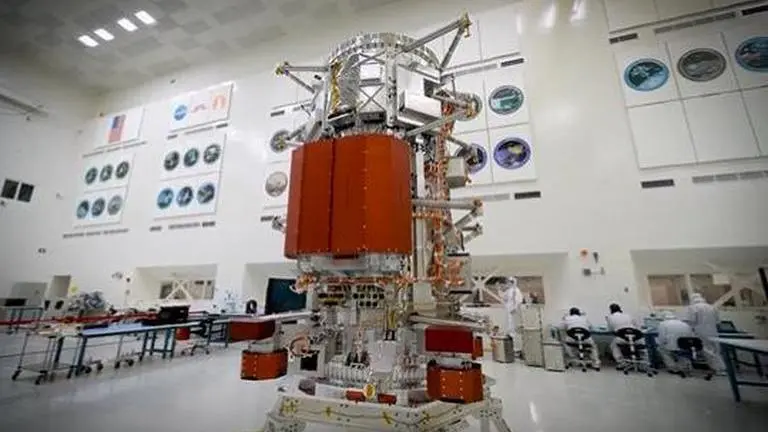Updated 16 August 2022 at 19:07 IST
Europa Clipper probe bound for Jupiter's Moon enters key developmental phase, NASA reveals
The Europa Clipper mission is targeted for launch in October 2024 through which NASA aims to examine the sub-surface ocean of Jupiter's Moon, Europa.
- Science News
- 2 min read

Nearly two months after shipping the Europa Clipper spacecraft to the California-based Jet Propulsion Laboratory (JPL), the probe is now at its key developmental phase, revealed NASA. According to the agency's latest update, the spacecraft is currently in the cleaning room of JPL's Spacecraft Assembly Facility where it will undergo ultra-hygienic assembly for the next two years. This probe is part of the Europa Clipper mission which is targeted for launch in October 2024 toward Jupiter's Moon, Europa.
One step closer: Our @EuropaClipper has moved into High Bay 1, @NASAJPL’s largest clean room. The spacecraft is planned to launch to Jupiter’s icy moon in 2024: https://t.co/G1FQCUj9Om pic.twitter.com/eql790PWsA
— NASA (@NASA) August 15, 2022
'One step closer'
So far, several instruments to be used for the Europa Clipper mission have been completed and installed on the spacecraft. NASA said that the instruments that most recently arrived at the JPL facility from the John Hopkins Applied Physics Laboratory (APL) were the Plasma Instrument for Magnetic Sounding, and the wide-angle camera named Europa Imaging System.
Meanwhile, the instruments already installed aboard the spacecraft are the thermal-emission imaging instrument, called E-THEMIS, and the ultraviolet spectrograph, Europa-UVS. Their purpose is to support the sensors of the different instruments by stabilising them and ensuring their proper orientation.
(The Europa Clipper spacecraft; Image: NASA/JPL-Caltech)
Advertisement
The mission teams believe that most of the flight hardware and the remainder of the science instruments will be completed by the end of 2022, following which the spacecraft will be subjected to crucial pre-launch tests. After launching in 2024, the spacecraft will travel 2.9 billion kilometres over six years and will achieve orbit around Jupiter in 2030.
Notably, the Clipper probe measures 10 feet tall and five feet wide and will be equipped with a suite of nine science instruments. However, after the installation of the solar panels, the spacecraft will be as big as a basketball court, making it the biggest one ever developed by NASA for a planetary mission.
Advertisement
Why Europa?
Europa, which is enveloped in ice, harbours a vast internal ocean and scientists believe the water there might have conditions suitable for life. During the entire course of its mission, the spacecraft will conduct a total of 50 flybys to gather data on the satellite’s atmosphere, surface, and interior.
Using this data, scientists will determine the depth of Europa's ocean along with its salinity, thickness of the external icy crust and study the potential plumes that may be venting subsurface water into outer space.
Published By : Harsh Vardhan
Published On: 16 August 2022 at 19:07 IST

